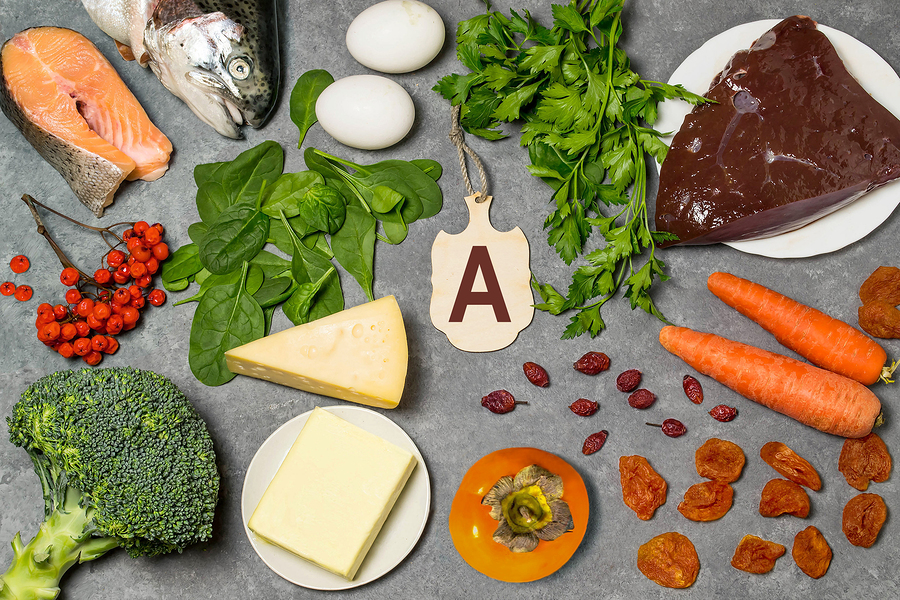Part of a family of substances called retinols, Vitamin A is important to our overall health and, specifically, our skin, immune system, and eyes.
When hearing about Vitamin A, most people think of carrots. It’s important to know that Vitamin A can be acquired from both plant and animal sources of food, and the source can make a difference in the type and amount of Vitamin A the body absorbs. In plant foods (including carrots), Vitamin A is in a form called carotenoids and has to be converted from this form to its active form, retinol. When acquired from animal sources, Vitamin A is more readily available to the human body. Our daily diet should include a mix of plant and animal-based foods.
The following foods provide Vitamin A in its most readily available form; they are listed in each category according to their highest level of readily absorbable Vitamin A content. (This is not a complete list, but a good sampling of high Vitamin A foods):
Meat and Fish
- Beef Liver
- Cod Liver Oil
- King Mackerel
- Salmon
Vegetables
- Sweet Potato
- Winter Squash
- Turnip Greens
- Sweet Red Pepper
- Spinach
Fruits
- Mango
- Cantaloupe
- Grapefruit
Cheese
- Goat Cheese
- Cheddar
- Roquefort Cheese
There are dozens of other fruits, veggies, and seafood sources of Vitamin A. Those listed above contain 16% (cheese, fruit) and up to 200% (some veggies and fish/meat) of the daily recommended adult intake of Vitamin A in one serving. The daily recommendation for children changes from birth through age 18, so it’s best to check with your healthcare provider before giving Vitamin A to a child. While your practitioner may want to adjust the dose, here is a quick reference for daily recommendations
Even if you’re eating a variety of organic, whole foods, it’s possible you’re not getting enough Vitamin A. For some people, the body isn’t able to convert Vitamin A due to a problem with absorption or because of a medical condition (e.g., cystic fibrosis). Others may have a genetic factor that doesn’t allow them to convert Vitamin A. These situations reduce the amount available for the body to utilize, which often leads to a nutrient deficiency that may show up as health conditions of the eyes, skin, or immune function.
Vitamin A supplements are widely available but the purity and consistency of the supplement can vary. Some supplements will contain preformed Vitamin A; some will have beta carotenes, and some will contain a combination. Dosing Vitamin A is highly individualized and because it is a fat-soluble vitamin, it can accumulate to toxic levels in the body. Women who are of childbearing age or pregnant should be under a physician’s care if taking Vitamin A. As always, speak to your holistic physician about the best form and dose of a Vitamin A supplement for your needs.
References
- Rasmussen HM, Johnson EJ. Nutrients for the aging eye. Clin Interv Aging. (2013) 8:741-8.
- Vitamin A Fact Sheet For Health Professionals: https://ods.od.nih.gov/factsheets/VitaminA-HealthProfessional/
- The Journal of Nutrition, Volume 142, Issue 1, 1 January 2012, Pages 161S–165S, https://doi.org/10.3945/jn.111.140756
- HealthLine.com “20 Foods that are High in Vitamin A” https://www.healthline.com/nutrition/foods-high-in-vitamin-a#section2

